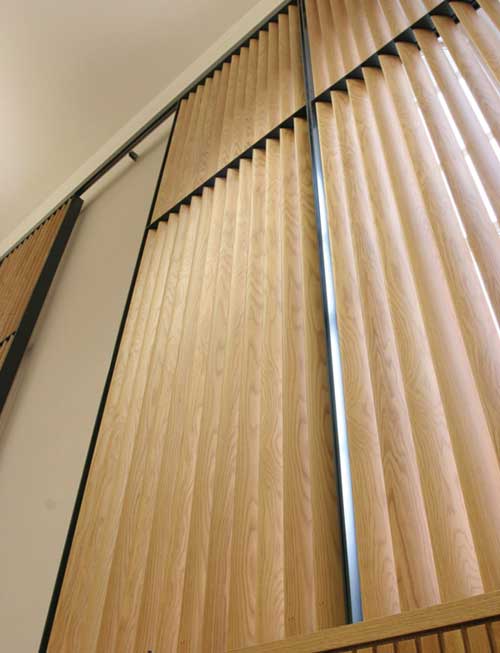Specifying Real Wood Veneer: Versatile, Economical, Sustainable
Core Materials
Depending on the performance requirements of the finished product, the substrate or core might be specified or made of the following materials (or many adhered combinations of the following):
Softwood, hardwood, MDF, LVL, as well as roll form or extruded aluminum, steel, polyvinyl or fiberglass. Though cores can be made of virtually any stable material, finger-jointed softwood cores are generally recognized to be the most popular and economical substrates for mouldings and millwork.
This use of softwood fingerjoint lumber is consistent with wise wood resource management principles that require every harvested tree to be used to its maximum economic and environmental value.
Softwood cores can be fabricated from the lower grades of industrial lumber that might otherwise be rejected, because the profile wrapping and laminating processes allow for the coverage of visible ‘defects’ in the lower grade lumber core material.
This is particularly important in light of the fact that billions of cubic feet of useable low grade lumber are currently under-utilized.
If this waste wood could be transitioned to the supply chain, harvesting burdens would be reduced on forests, and billions of tons of embodied carbon dioxide sequestered, eliminating methane and other gases emitted by decomposing wood.
Research indicates that up to 50 percent of underutilized or waste wood material could be converted to serviceable solid wood products, with the remainder available for processing into byproducts - a situation where a 100 percent utilization rate could be achieved. These statistics indicate that an enormous amount of wood products can be manufactured without any additional timber harvesting.
The low-grade pine lumber most often used for most fingerjoint core substrates comes mainly from sustainably managed forests on relatively short rotations.
 |
Extruded aluminum wrapped in white oak was the ideal solution for vertical blinds at London's King's College. Photo courtesy of Contact Industries |
The solid clear blank products used for veneer come from forestland that is being sustainably managed for significantly longer rotations.
Using the plentiful, faster-growing, shorter-rotation pine for core reduces pressure on natural forestlands and on less plentiful species.
The 50-1 resource efficiency ratio in using veneer achieved in profile wrapping allows all species to be utilized at an increased level of sustainability.
Further, because the low-grade pine core material is harvested on the shorter rotation, thereby generating good economic value, there is less pressure to convert these managed forests to other non-forest purposes, enabling them to continue to provide such benefits as carbon sequestering, wildlife habitat, soil and water retention and filtering, etc.
Despite its considerable resource efficient attributes, however, a soft wood substrate is may not always provide the product application answer.
Finger-jointed hardwood cores (which often are made from post-industrial recycled wood waste) are periodically specified where the intent may be to address a specific installation application.
NAUF MDF and Particleboard, in its range of product types, may be specified, but due to weight and possible exposure to moisture, is best selectively placed in strategic areas or products.
Offering engineering or other important options, alternate material substrates including aluminum, PVC, fiberglass and steel are often used for specific purposes, including ceiling panels and window and door components.
In applications where product weight is may present an issue, aluminum may function as an appropriate core material.
During a recent remodel, London's King's College used profile wrapping in creating vertical Venetian blinds. While designers liked the aesthetics of white oak lumber, it was deemed too heavy and too costly to be deployed in a window covering.
The college opted instead for extruded aluminum wrapped in white oak veneer for a dimensionally stable, fire-rated, aesthetically pleasing solution. Some 1,210 pieces totaling 92,503 lineal feet of vertical blinds were shipped with pieces delivered to exact measurements in made-to-order lengths.









